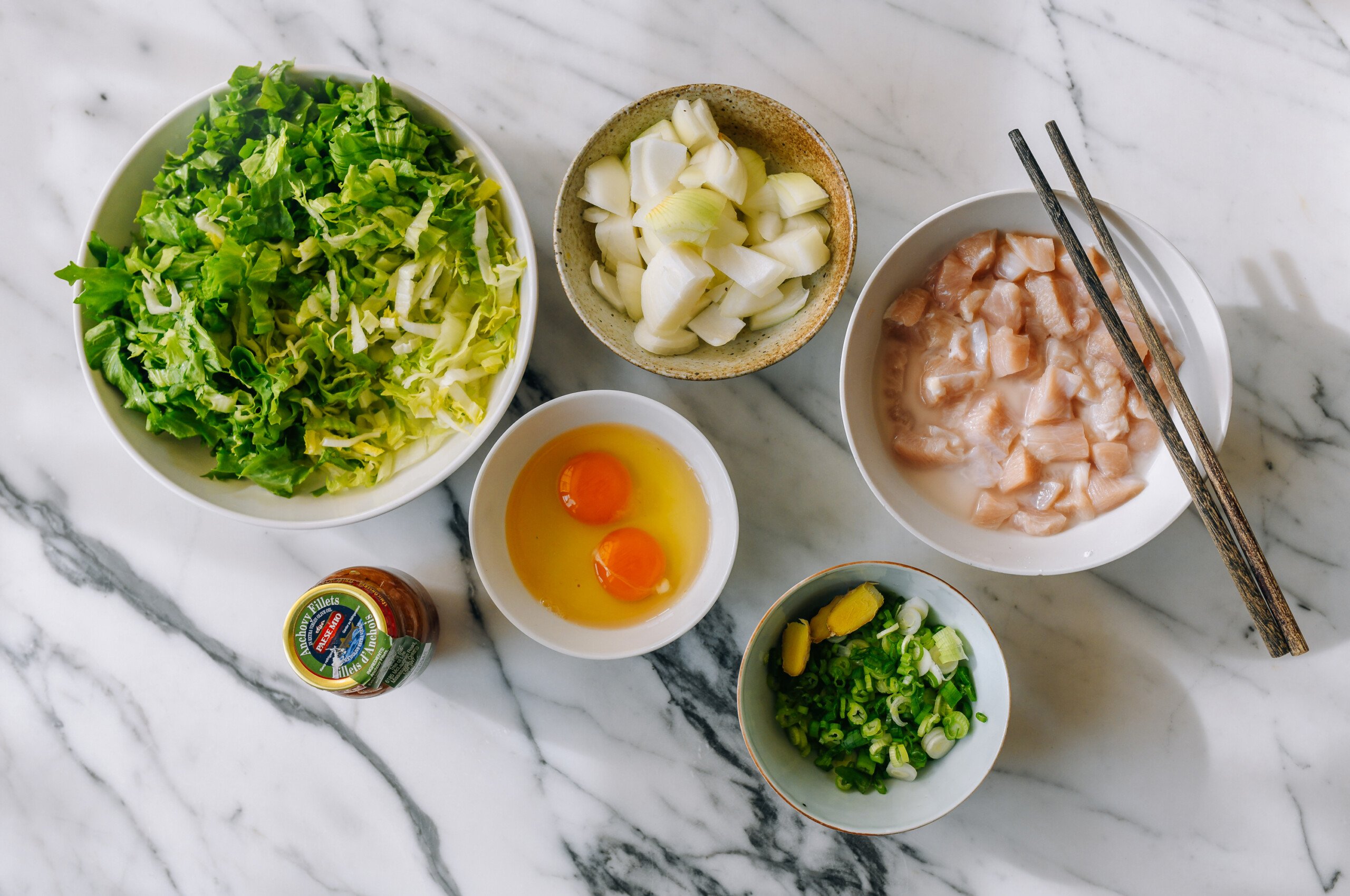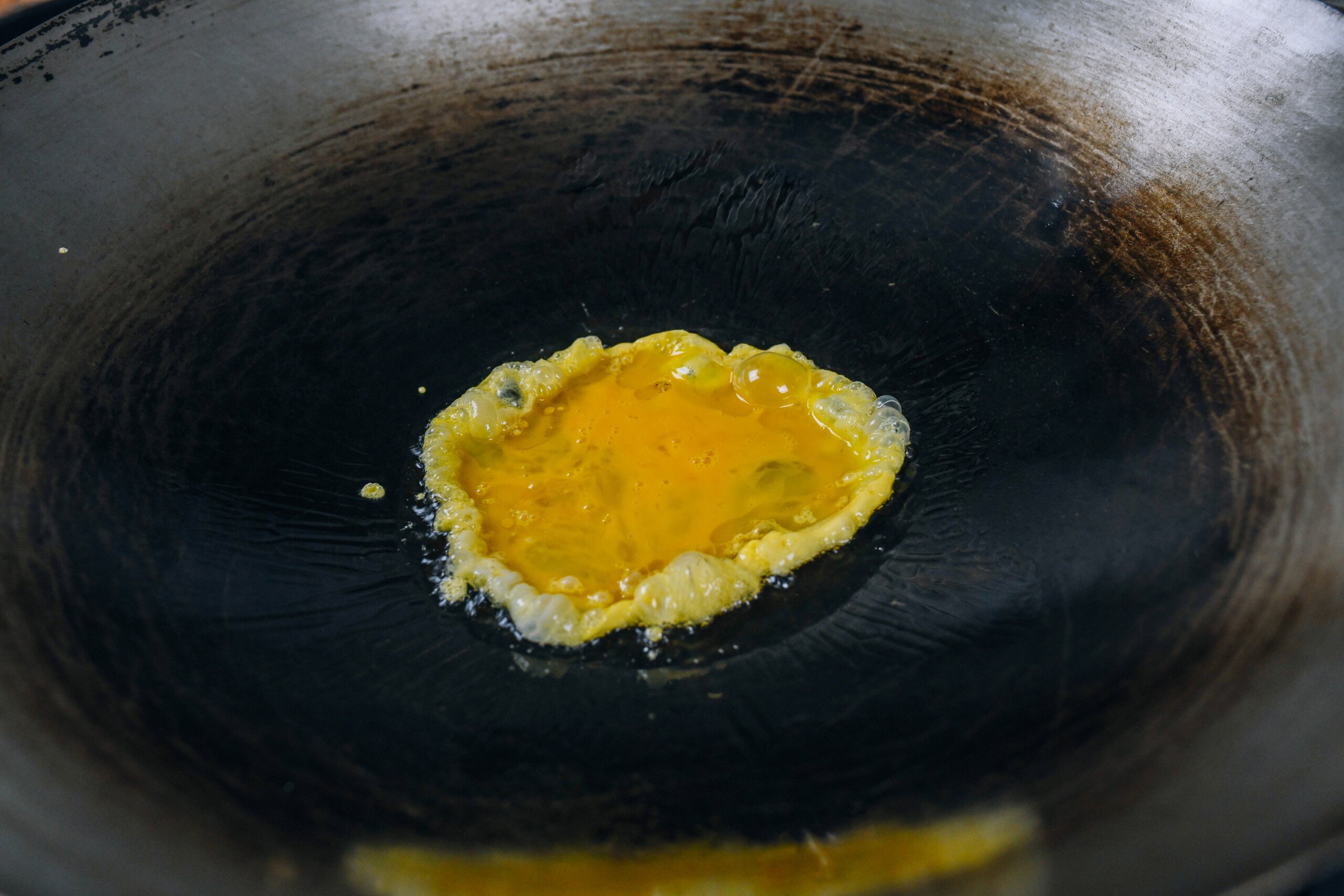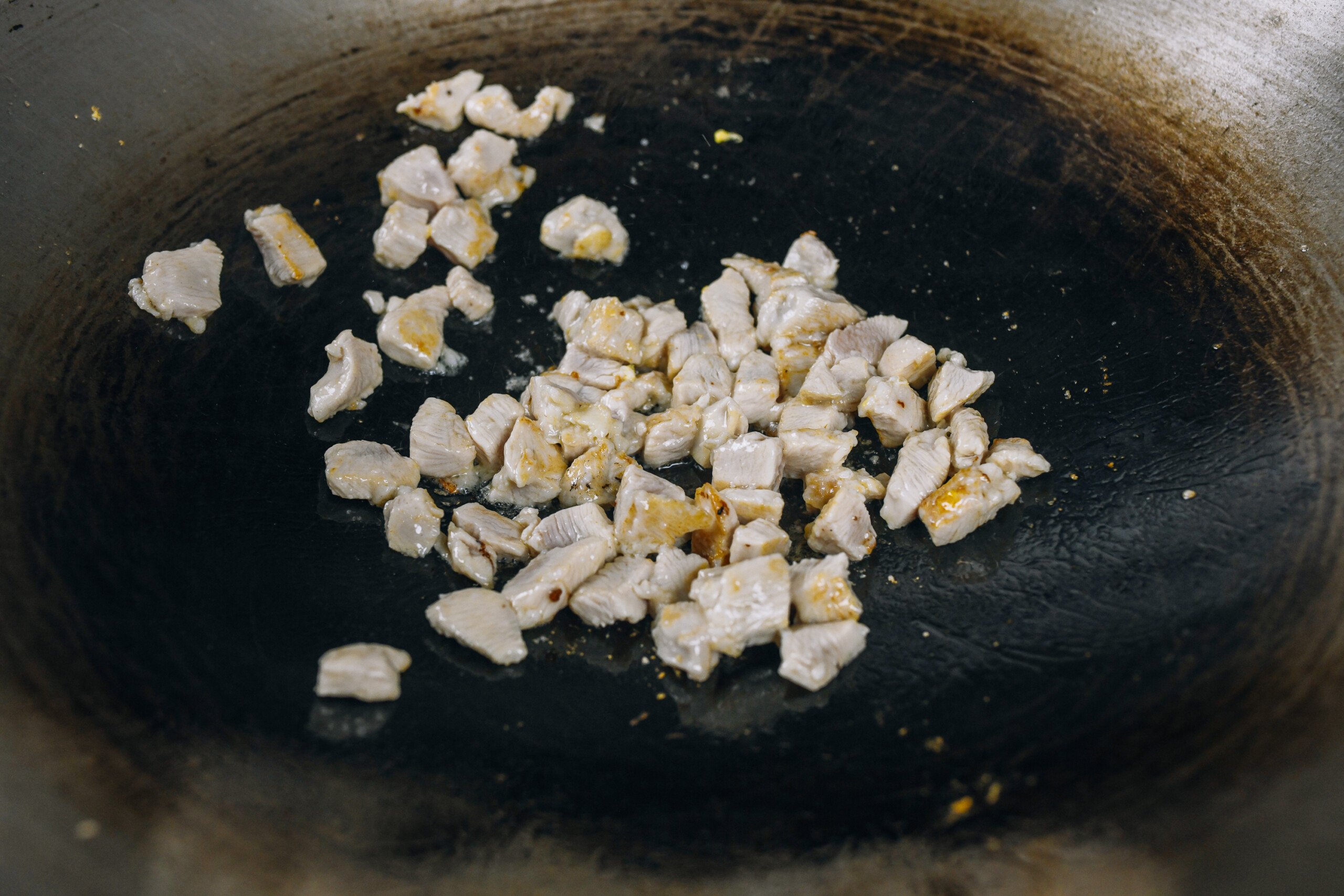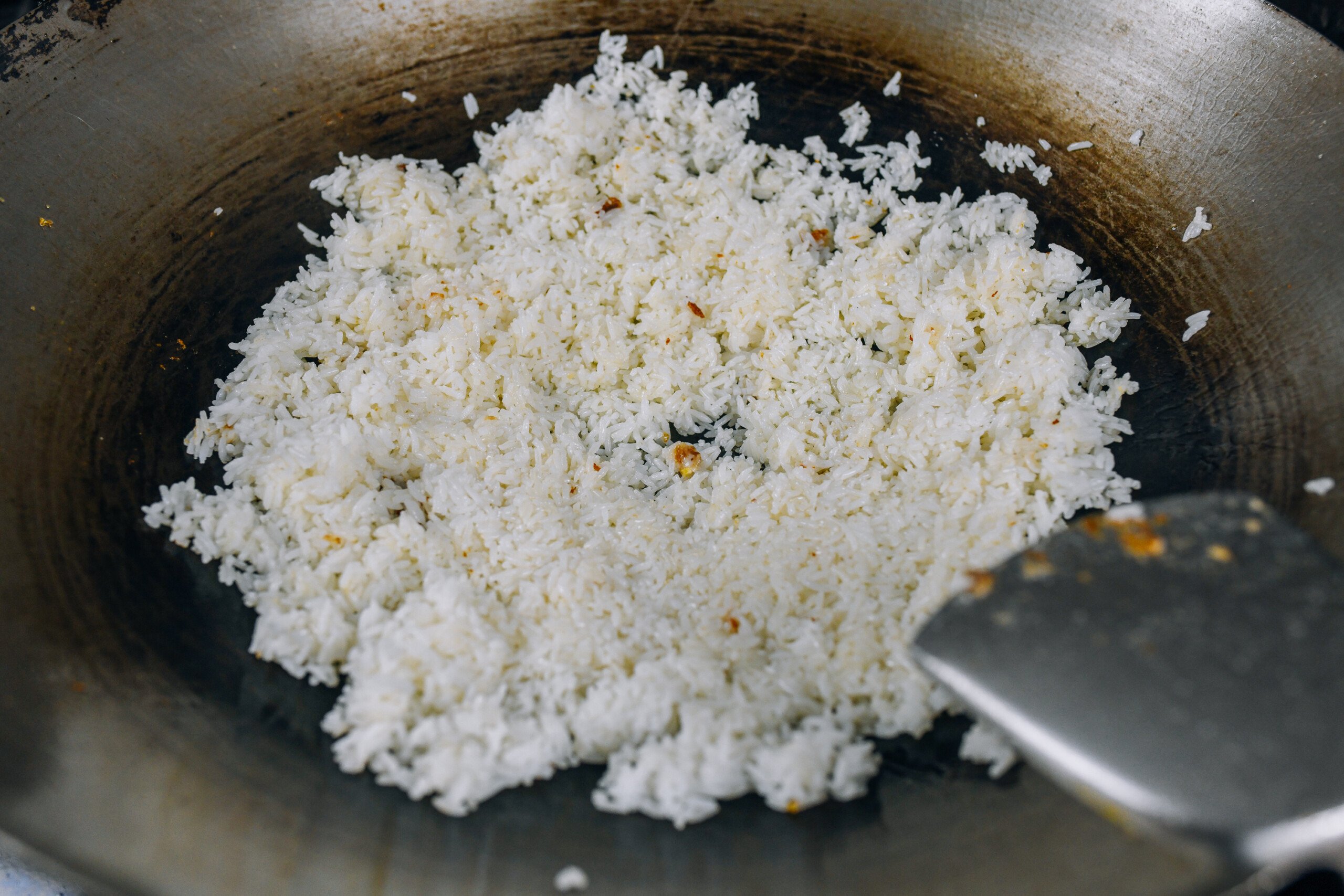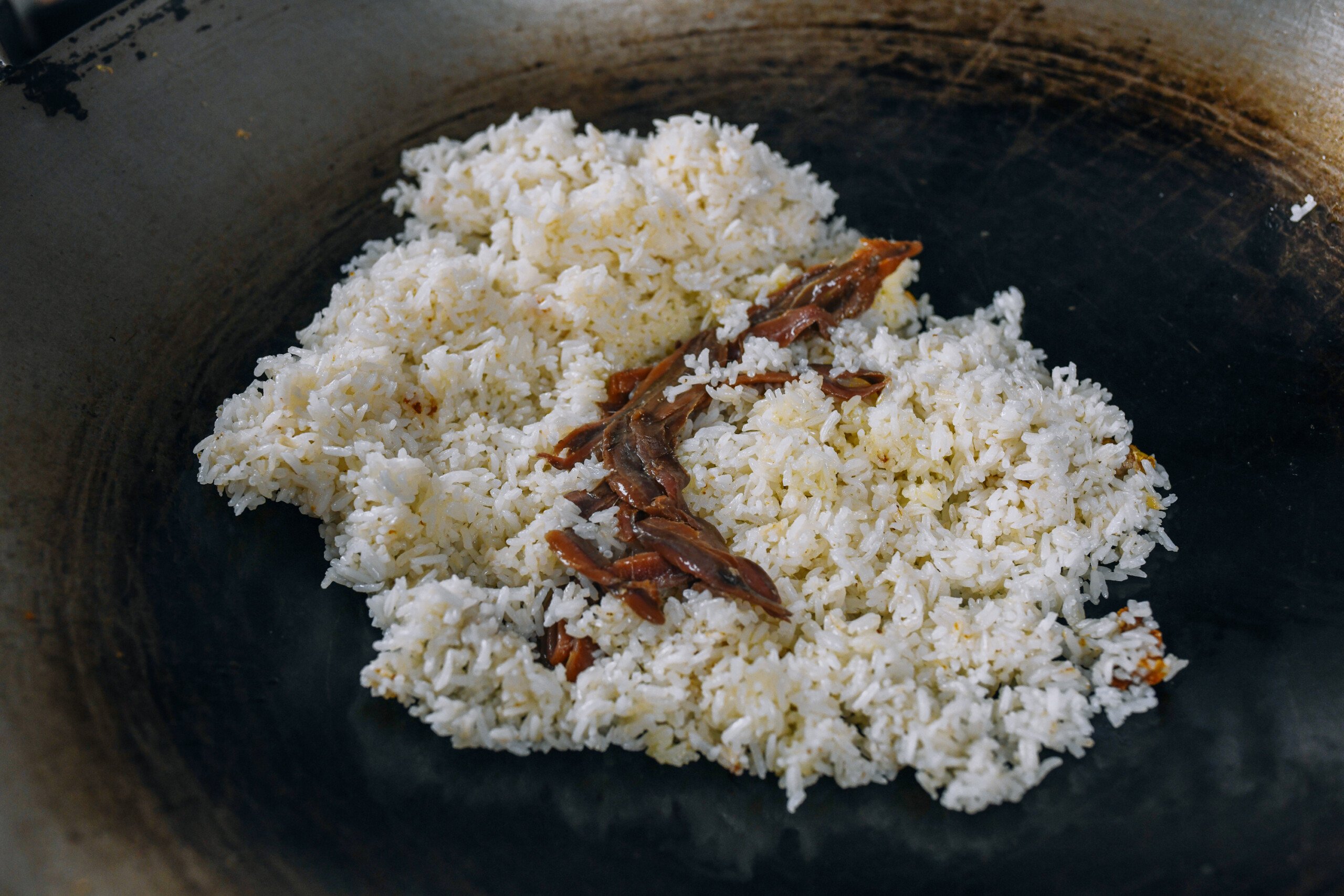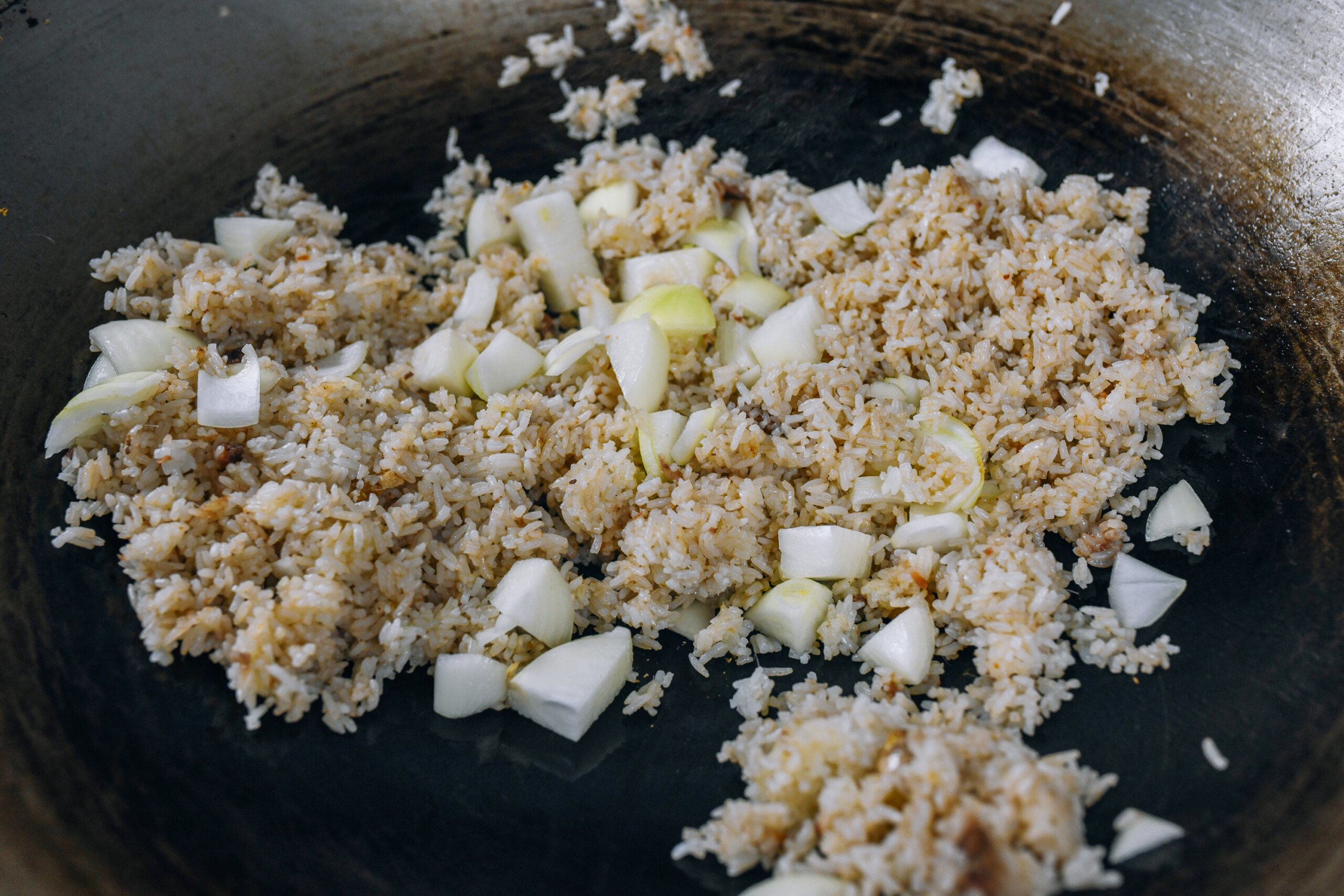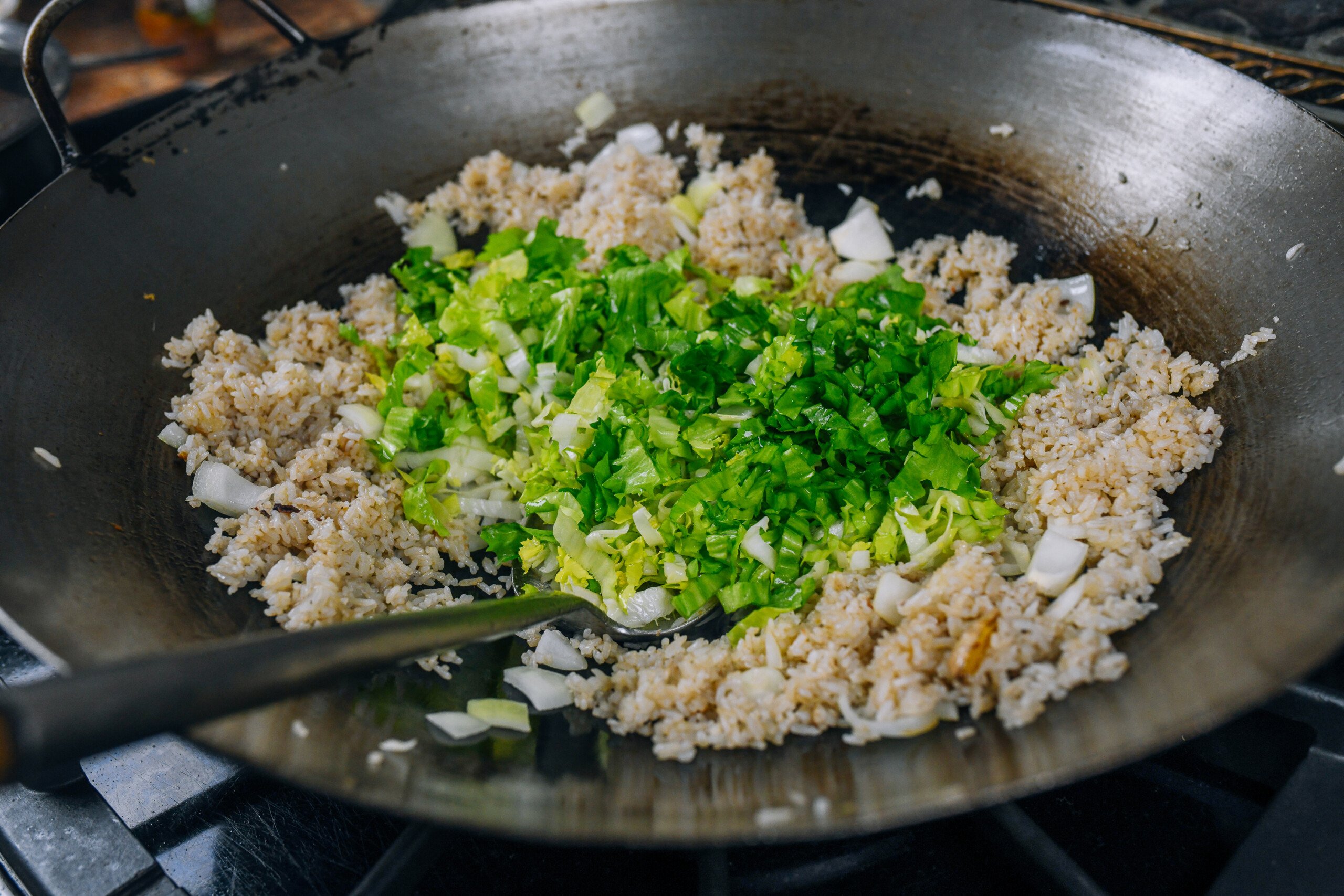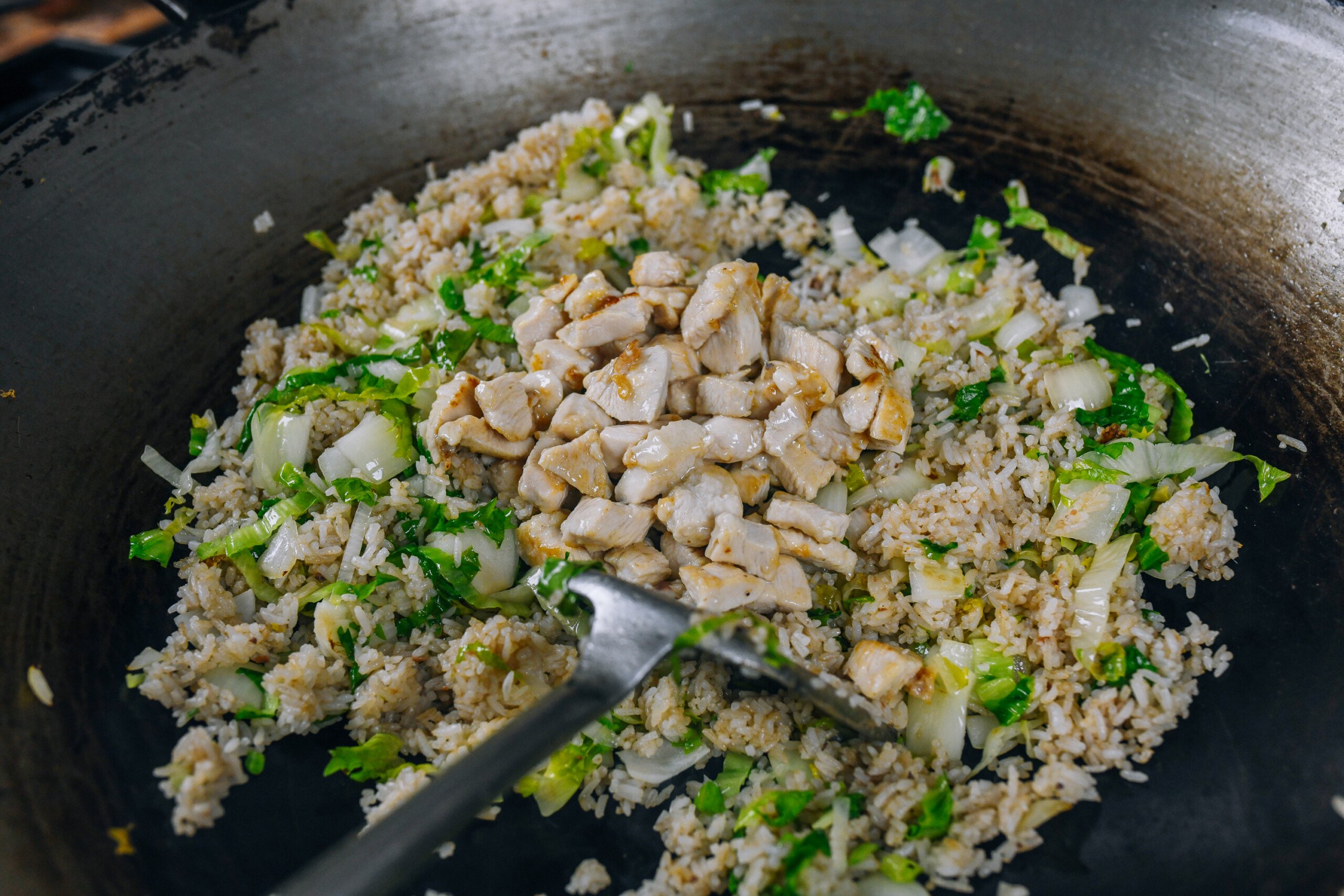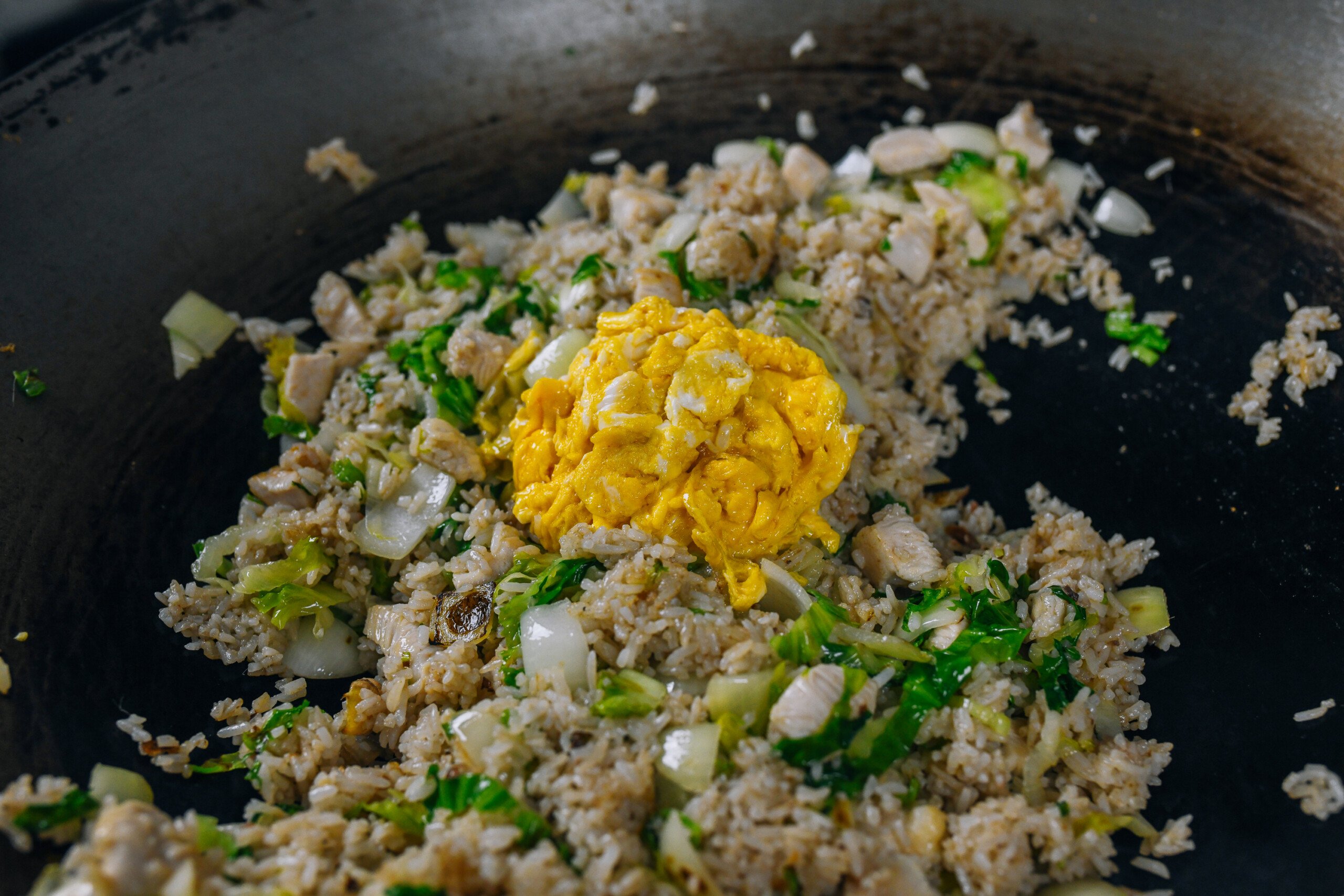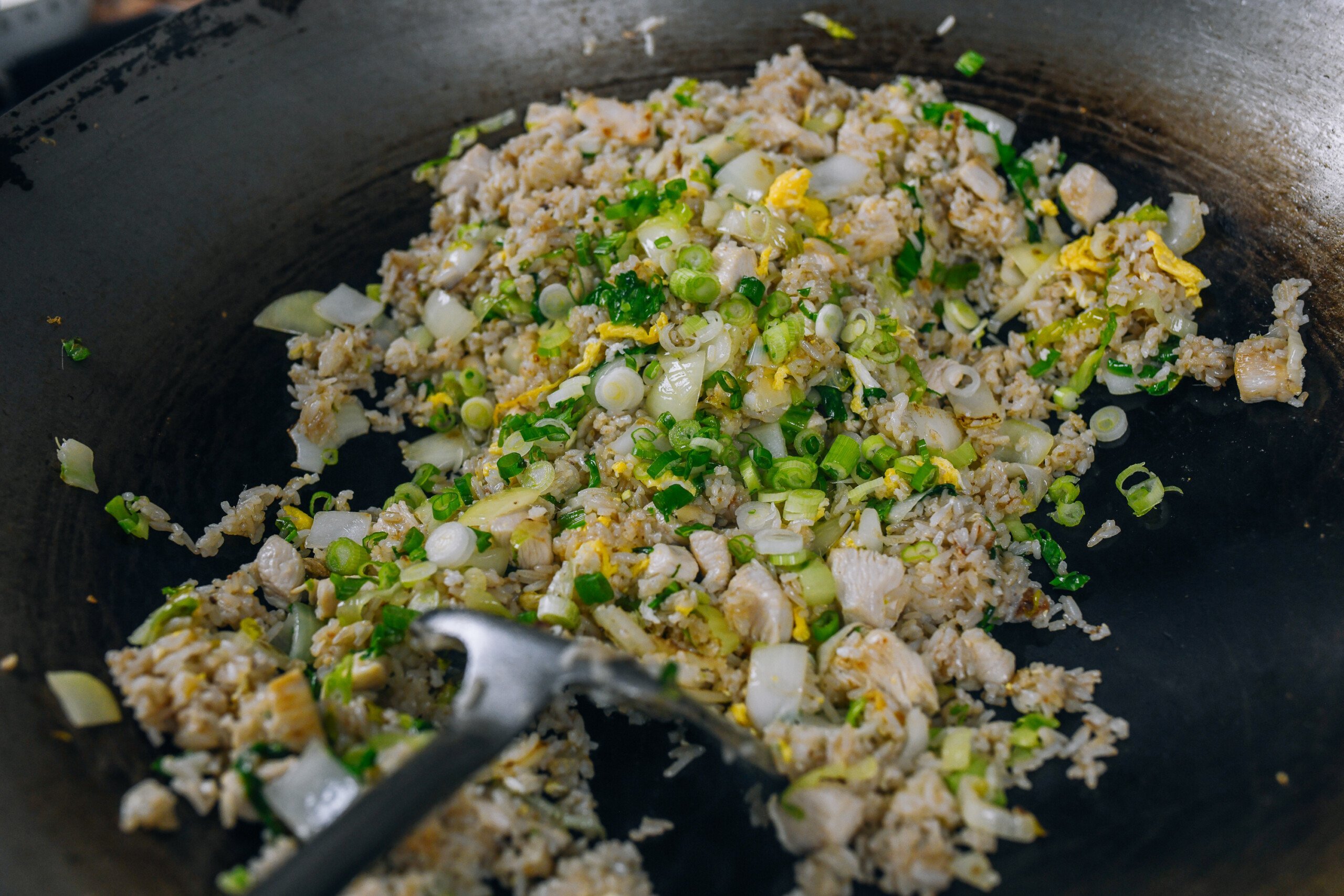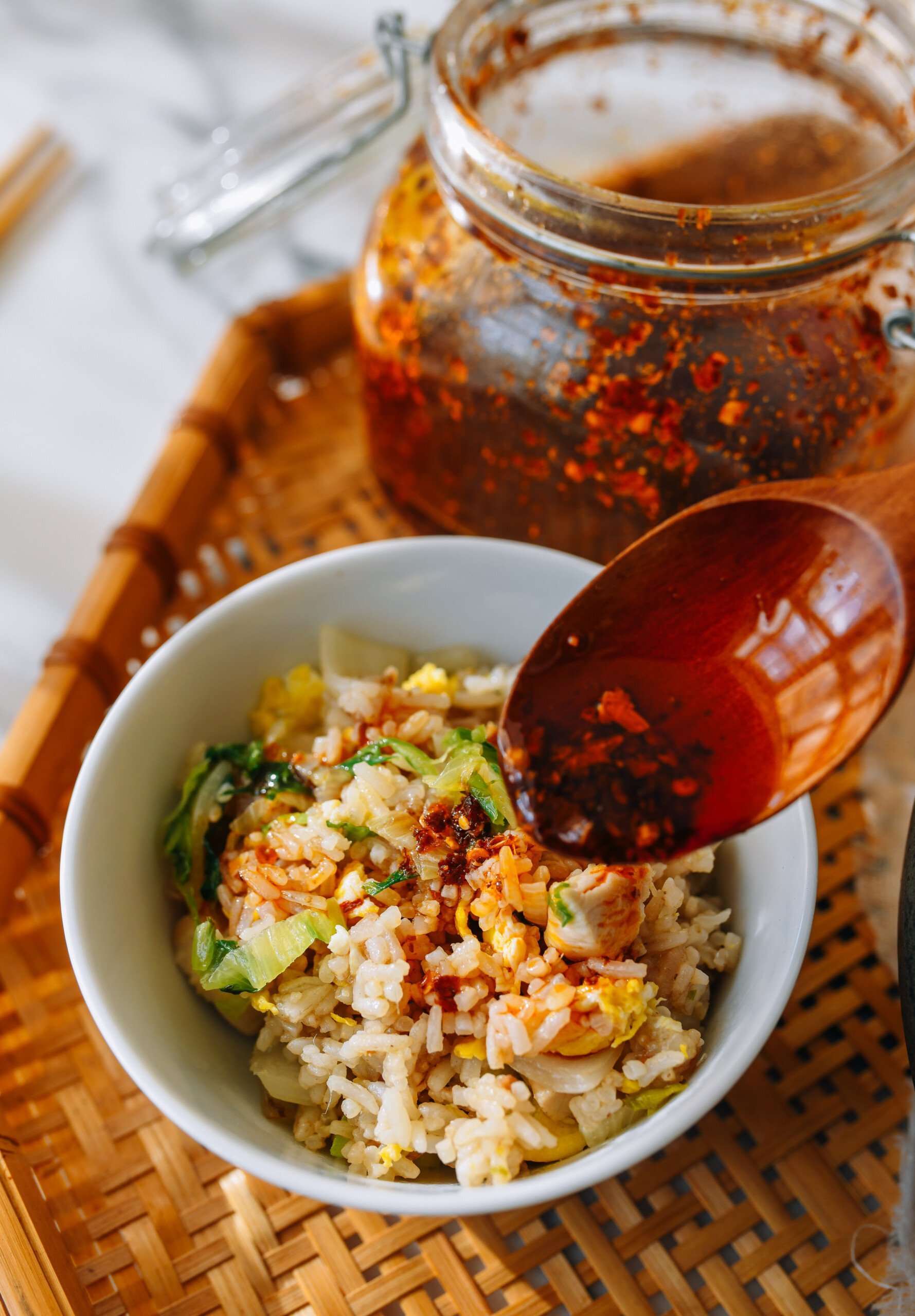It’s a dish that we love, but it can be hard to find the right salted fish. Recently, we discovered that Italian anchovies packed in oil are a great substitute for Cantonese haam yee (fermented salted fish). This recipe gets you a similar nostalgic taste, with an ingredient you can find at the regular supermarket!
Anchovy Fried Rice? Yes, It’s a Thing!
Anchovy fried rice as a concept isn’t new. Indonesian nasi goreng teri is a fried rice made with dried anchovies, influenced by Chinese immigrants. We also grew up eating a stir-fry of dried anchovies and roasted peanuts with morning porridge (delicious—recipe coming soon from my mom!) But while there’s a tradition of using anchovies in fried rice, this isn’t about those little dried anchovies loved throughout Asia. This version uses a pantry staple: the regular old Italian anchovy in olive oil. The rich umami of the anchovies is an astoundingly good substitute for Cantonese-style salt-cured fish.
What is Chinese salted fish?
Cantonese fermented and salt-cured fish never fails to bring my dad back to his childhood in my grandma’s kitchen. It’s called méi xiāng xián yú in Mandarin and “mui heung hom yee” in Cantonese (霉香咸鱼), which according to Google translate, literally means: “musty fragrant salted fish.” It doesn’t inspire confidence, I know. Keep reading. That musty flavor is one that’s hard to put into words if you can’t actually taste it firsthand. It’s a flavor that tastes like home and thousands of years of kitchen ingenuity. If you’ve ever had jarred bamboo shoots or preserved chili bamboo shoots, they have a musty undertone to them that I personally love. Another related flavor profile would be dry-aged beef. Why would you want your steak to sit in a chilled cellar to grow mold on the outside? Same reason why you want to eat a fermented piece of salted fish. (Ditto with cheese, come to think of it.) It originates in Guangdong Province (i.e. Cantonese cooking) and is made by salting and drying a soft white fish, usually croakers. During the drying process, the fish ferments and takes on a flavor similar to Malaysian shrimp paste or belacan—and anchovies as it turns out. It’s then sold, usually whole. You chop it into pieces as you need, using a small amount to add tons of flavor to an entire bowl of ground pork or an entire wok full of fried rice. I’m referencing two of our all-time favorite ways to cook with salted fish: Cantonese Chicken & Salted Fish Fried Rice and Steamed Pork with Salted Fish (咸鱼蒸肉饼). (Read another love letter to salty fish fried rice! It really is a dish that tastes like a warm hug at home to so many people.) There are three kinds of people reading this recipe right now: To all of you, I say:
Anchovies, the Best Substitute for Chinese Salted Fish
Why is this recipe for salted fish fried rice so great? Because NO ONE EXCEPT ME EVER WANTS TO ORDER IT. I love Salted Fish Fried Rice so much, I’ll eat it anywhere. But Sarah’s not a big fan, and my parents are picky about ordering fried rice out. What’s more, many restaurants don’t actually add that much salty fish because it’s an expensive ingredient. Sometimes, it’s more of a vaguely fish-flavored chicken fried rice than anything else. So I’ve taken matters into my own hands to make one of my favorite dishes easier to recreate at home. All I have to do is reach into my pantry for a jar of anchovies. Et voilà! An Italian shortcut to a big bowl of Cantonese comfort food. The pungent, earthy pink-hued anchovy filets in olive oil, when combined with ginger, rice, and a hot wok, are a dead ringer for Cantonese hom yee.
Recipe Instructions
Marinate the chicken with 1 tablespoon of clear rice wine, the cornstarch, water, and salt. Mix thoroughly, massaging the chicken with your hands until it absorbs all the marinade ingredients. Prep the eggs, ginger, onion, lettuce or peas, and scallion. You want everything ready and close at hand before you turn on the flame. Heat a wok over high heat until just smoking. Add 1 tablespoon of oil. Add the eggs, and scramble them quickly with your wok spatula. Cook until they’re 80% done, but still a little runny. Transfer back to the bowl and set aside. With the wok still set over high heat, add 1 tablespoon of oil, followed by the chicken. Stir-fry until the chicken turns opaque. Remove from the wok and set aside. You’ll cook it again before the dish is done. Reduce the heat to medium-high. Add the remaining 2 tablespoons of oil to the wok. Fry the ginger for 20-30 seconds. Add the rice, spreading it out and flattening any clumps with your wok spatula. Stir to warm it through. Make a well in the center of the rice. Reduce the heat to medium. Add the anchovies and break them into smaller chunks with your spatula, letting them warm through for 30-60 seconds. Stir to combine with the rice and evenly distribute the anchovy. If you want EXTRA anchovy flavor, pour in the anchovy oil too. Add the onion, stirring to combine, and then spread everything out in a single layer. Then add the remaining 1 tablespoon of rice wine and the oyster sauce. Add the lettuce or peas, stir-frying until wilted or warmed through, respectively. Stir in the chicken. Then add the eggs, stirring to distribute the egg into the rice. Finally, stir in the scallions. Serve with chili oil. We recommended something like our homemade chili oil rather than a strong-flavored chili crisp which can obscure the taste of the anchovy.
